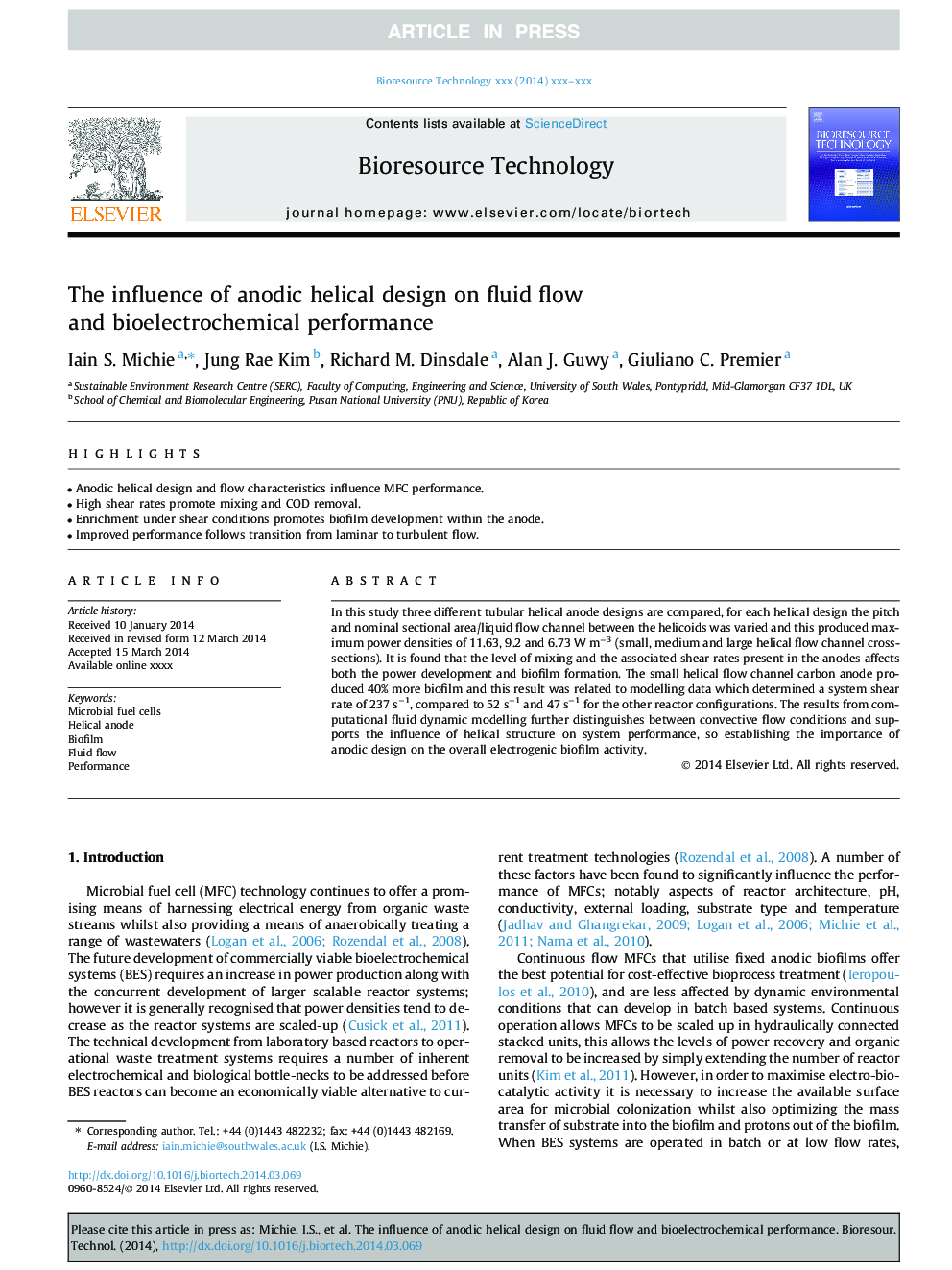| Article ID | Journal | Published Year | Pages | File Type |
|---|---|---|---|---|
| 7077170 | Bioresource Technology | 2014 | 8 Pages |
Abstract
In this study three different tubular helical anode designs are compared, for each helical design the pitch and nominal sectional area/liquid flow channel between the helicoids was varied and this produced maximum power densities of 11.63, 9.2 and 6.73Â WÂ mâ3 (small, medium and large helical flow channel cross-sections). It is found that the level of mixing and the associated shear rates present in the anodes affects both the power development and biofilm formation. The small helical flow channel carbon anode produced 40% more biofilm and this result was related to modelling data which determined a system shear rate of 237Â sâ1, compared to 52Â sâ1 and 47Â sâ1 for the other reactor configurations. The results from computational fluid dynamic modelling further distinguishes between convective flow conditions and supports the influence of helical structure on system performance, so establishing the importance of anodic design on the overall electrogenic biofilm activity.
Related Topics
Physical Sciences and Engineering
Chemical Engineering
Process Chemistry and Technology
Authors
Iain S. Michie, Jung Rae Kim, Richard M. Dinsdale, Alan J. Guwy, Giuliano C. Premier,
